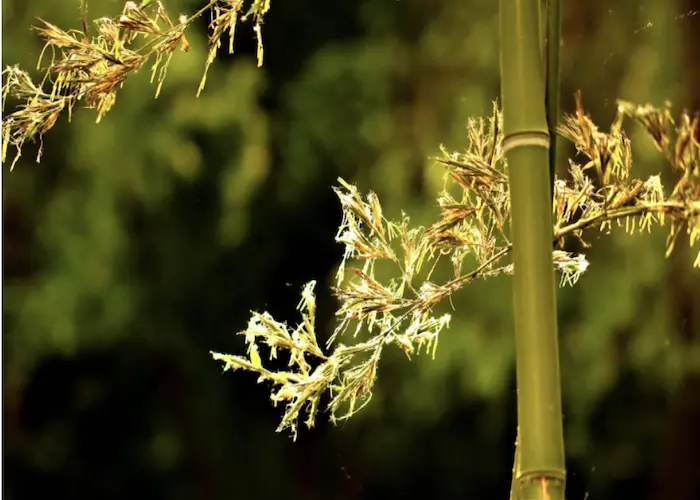Bamboo is often celebrated for its rapid growth, versatility, and strength, but its floweringphenomenon remains one of nature’s most intriguing mysteries. While many gardeners may be familiar with bamboo’s lush green foliage and towering culms, the actual flowers are relatively rare and not as visually striking as one might expect. This article delves into the characteristics of bamboo flowers, their unique life cycle, and the various types of flowering patterns exhibited by different species.
Understanding Bamboo’s Life Cycle
Bamboo is a perennial grass that typically undergoes a long vegetative phase before flowering. The life cycle of bamboo varies significantly among species, with flowering intervals ranging from 40 to over 120 years. Most bamboo species are monocarpic, meaning they flower only once in their lifetime, after which they die. This unique reproductive strategy adds to the allure of bamboo flowering.
Life Stages of Bamboo
Germination: Bamboo begins its life as a seed, which germinates under favorable conditions.
Juvenile Stage: The plant enters a juvenile phase where it develops roots and shoots but does not flower.
Vegetative Growth: During this extended phase, which can last several decades, bamboo grows rapidly and spreads through rhizomes.
Flowering: After many years, the plant reaches maturity and enters the flowering stage.
Seeding and Death: Following the flowering phase, the plant produces seeds and subsequently dies.
What Do Bamboo Flowers Look Like?
Bamboo flowers are often understated in their appearance. Unlike the vibrant blooms of many other plants, bamboo flowers resemble small spikes or clusters that can be likened to grains of rice or barley. They are typically borne on elongated inflorescences that emerge from the upper nodes of the culms.
Characteristics of Bamboo Flowers
Shape: The flowers are generally elongated and spike-like, forming clusters or panicles.
Color: Most bamboo flowers are not particularly colorful; they tend to be pale green or yellowish.
Size: Individual flowers are small, often measuring just a few millimeters in length.
Seed Production: After pollination, bamboo flowers produce seeds that are lightweight and can be dispersed by wind.
Types of Bamboo Flowering Patterns
Bamboo exhibits three primary types of flowering patterns: gregarious flowering, sporadic flowering, and annual flowering. Understanding these patterns is essential for gardeners interested in cultivating bamboo.
1. Gregarious Flowering
Gregarious flowering is a fascinating phenomenon where all members of a particular bamboo species flower simultaneously across vast geographic areas.
This synchronous blooming can occur regardless of local climate conditions and typically happens after many decades of vegetative growth.
Life Cycle Impact: After gregarious flowering, the entire population usually dies off within a few years.
Genetic Trigger: It is believed that gregarious flowering is triggered by an internal genetic mechanism rather than environmental factors.
Examples: Species like Phyllostachys bambusoides exhibit gregarious flowering every 120 to 130 years.
2. Sporadic Flowering
Sporadic flowering occurs when individual culms within a clump flower at different times rather than synchronously. This type can be influenced by environmental factors such as drought or pest damage.
Survival Rate: In sporadic flowering, the plants rarely die after blooming; however, most seeds produced during this event are often not viable.
Characteristics: The pattern is irregular and can vary significantly even within the same species.
3. Annual Flowering
Some herbaceous bamboos exhibit annual or nearly annual flowering patterns. These species tend to have shorter life cycles compared to woody bamboos.
Examples: Certain types of Bambusa may flower annually without dying off completely.
Seed Viability: Seeds produced in annual flowering events may have higher viability compared to those produced during gregarious events.
Environmental Influences on Bamboo Flowering
Bamboo flowering can also be influenced by various environmental conditions:
Drought Stress: Prolonged periods without rainfall can trigger sporadic flowering in some species.
Nutrient Availability: Malnutrition or poor soil conditions may lead to irregular blooming patterns.
Pest Infestation: Severe attacks from pests or diseases can induce flowering as a stress response.
The Mystery Behind Bamboo Flowering
Despite extensive research on bamboo’s life cycle and flowering habits, many aspects remain poorly understood. Scientists continue to investigate why certain species exhibit gregarious behavior while others do not, as well as the genetic mechanisms underlying these phenomena.
Research Insights
Recent studies have compiled data on over 600 bamboo flowering events across various species. Researchers have noted:
1. The significant variability in flowering intervals among different species.
2. The potential role of genetic factors in synchronizing flowering across populations.
3. Observations that some bamboos may flower sporadically even within clonal populations.
Caring for Flowering Bamboo
For gardeners who wish to cultivate bamboo that may eventually flower, understanding care requirements is crucial:
1. Soil Quality: Ensure well-draining soil rich in organic matter for optimal growth.
2. Watering Needs: Maintain consistent moisture levels but avoid waterlogging.
3. Fertilization: Use balanced fertilizers during the growing season to promote healthy growth.
4. Pest Management: Monitor for pests and diseases that could stress the plant and trigger premature flowering.
Conclusion
In summary, while bamboo flowers may not possess the flamboyance of other floral displays, their unique characteristics and intriguing life cycles contribute significantly to the allure of this remarkable plant. Understanding the types of bamboo flowering—gregarious, sporadic, and annual—alongside their environmental influences provides valuable insight for gardeners and enthusiasts alike.
As we continue to explore the mysteries surrounding bamboo’s reproductive strategies, we gain a deeper appreciation for this resilient grass that has captured human fascination for centuries. Whether you are cultivating bamboo for its aesthetic appeal or practical uses, knowing what to expect when it comes time for it to flower will enhance your gardening experience and deepen your connection with this extraordinary plant family.
Related topics:
- How Bamboo Survives?
- Uncovering Bamboo Necessary Conditions For its Growth
- How to Make a Bonsai Bamboo Plant?

